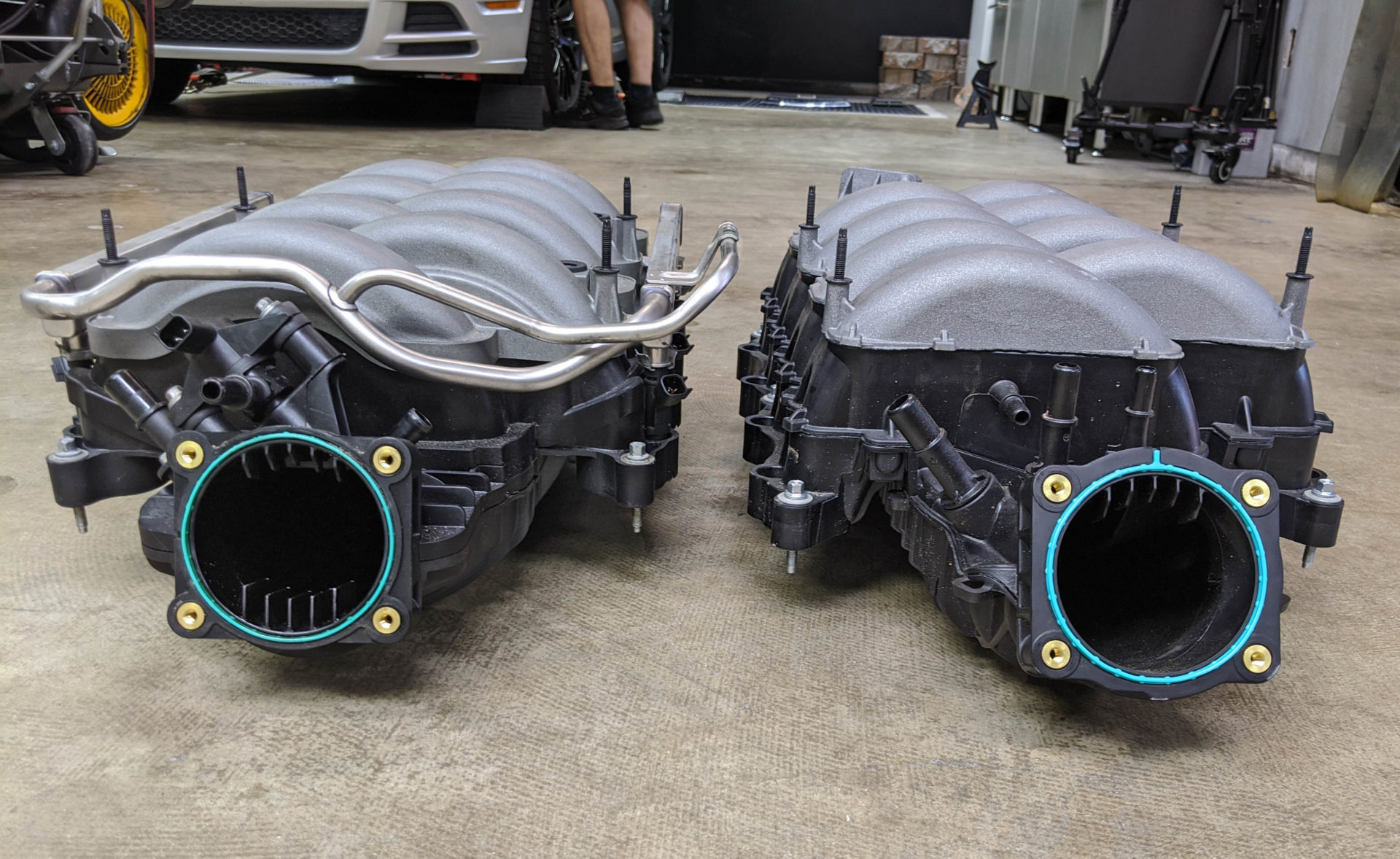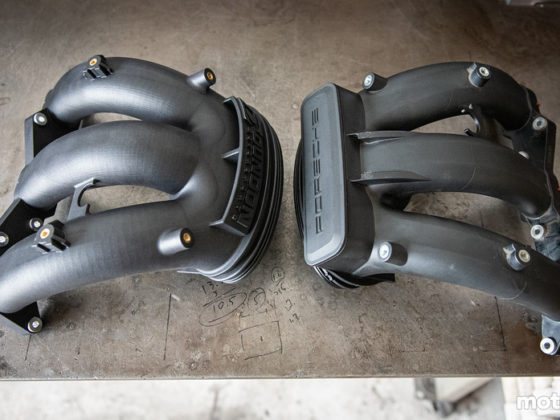
The stock engine bay will not look stock for much longer. First up on the list to make more power is usually an aftermarket intake.

K&N Filters have an unmatched proven record of performance and reliability. We have had a lot of success with K&N filters over the years: 14 WHP gains in Project E90 M3, 23 WHP gains in Project Viper, 23 WHP gains in Project Lexus IS-F, and 20 WHP gains in a 2010 Roush Mustang. Needless to say, we were looking forward to seeing what gains a K&N intake would yield on our Budget Mustang.

For our build we tested K&N Filter’s “RACE” Performance Air Intake System (Part #: 63-2500). This intake has a larger than stock diameter that requires a tune, unlike their Series 63 “AirCharger” Cold Air Intake (Part #: 63-2578) that has the same inner diameter as stock and does not require a tune.
I really like this intake from K&N. It’s great to see proper enclosed air boxes that doesn’t suck in hot engine bay air, unlike virtually every open-element “Cold Air Intake” on the market.

Open Element Air filters, even sophisticated ones with heat shields that seal to the hood, almost always make more power (than an enclosed airbox) on a dyno with the hood up, and make less power out in the real world due to sucking in less dense, hot engine bay air.
The GT350 is one of the very few OEM cars that utilizes an open-element design from the factory. This was a marketing decision that determined the aftermarket likes them and think they perform better, even though this decision actually hurt the car’s horsepower.

Thankfully the new GT500 has an almost perfectly sealed airbox (when you install the foam panel on the side of the box), like 99% of the rest of the cars on the planet. This ensures that the engine only sees ambient air temperatures from the front of the car while slightly ramming air into the inlet to reduce the the intakes suction.
We will test the K&N Intake’s performance with the lid on and off ourselves, but in a static environment on a dyno, there will almost always be a gain from removing the lid or using an open-element air filter. The right way to test an intake’s performance is to log the car’s torque output channel and back to back with the lid on vs off out on the road to see whether the increased air flow offsets lower density hot engine bay air to make more power.
Having said that, when making significantly more power than what a given intake was designed for, there will always be a point where reducing restrictions with an open-element filter will offset the power losses from the hotter engine bay air entering the intake.
The best solution is to increase the size of the airbox and filter, but there may not be enough room to do this, or companies aren’t interested in spending far more money to do this for an extremely small market. For most people, including our Project Mustang, a closed airbox will perform better than a “Hot-Air-Intake” out in the real world.
Quick Reference:
Page 1 – Baseline Dyno
Page 2 – K&N Performance Air Intake System
Page 3 – K&N Intake Install
Page 4 – K&N Intake Dyno & 2018+ Intake Manifold
Page 5 – 2018+ Intake Manifold CMCV Delete and Stock Manifold Removal
Page 6 – Stock Gen 1 vs Gen 3 (2018+) Manifold Comparison
Page 7 – 2018+ Manifold Install
Page 8 – 2018+ Manifold Dyno & Tune




10 comments
Would it make sense to attempt a bit of port matching to accommodate for the larger ports on the manifold. It doesn’t appear to be a huge difference, but hitting that hard edge on the heads is definitely disturbing air flow.
I guess the big unanswered question is would the same tune time get you 400hp with the old manifold minus the torque loss. Doubt you would get a peak that matches, but the area under the curve might be more useful on a track car.
Stay tuned for Part 3 where we answer that question.
and here I was all excited to read about panhard bar benefits over watts link…
Stay tuned for the article that tackles the suspension.
Love it.
Awesome testing! Based on what I saw on Project S2000 with testing of the airbox lid on vs off, I mean, you and I know you’ll see similar on the Mustang. But it’s always great to see the real data, so I’m excited to see it! I always love seeing the data you present.
As much of a Mustang fan as I am, certainly a 4th gen F-body with a cam and exhaust is a cheaper ticket to 400whp.
I just looked into it and it doesn’t seem like a cam and exhaust can make 400whp on an F-body. Even if it does, this is “Budget 400whp TRACK CAR” and it would cost far more to make an F-body competent on road courses 😉
Great information,I can’t wait to see the third article.